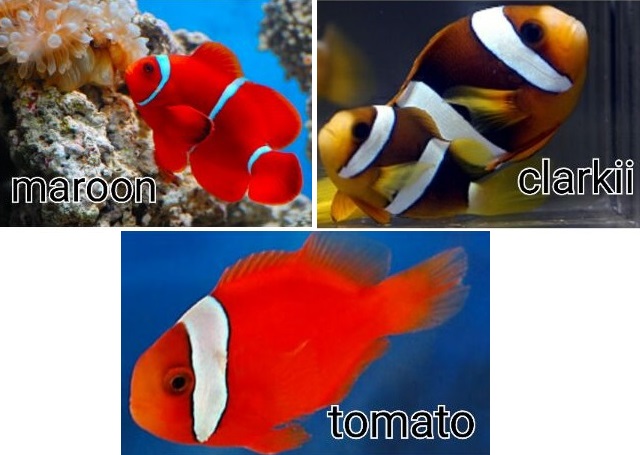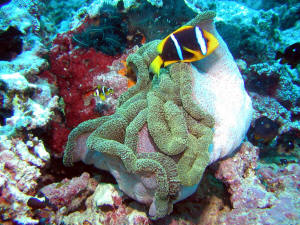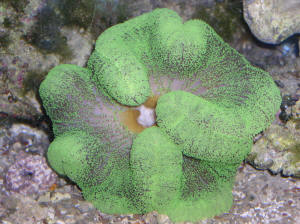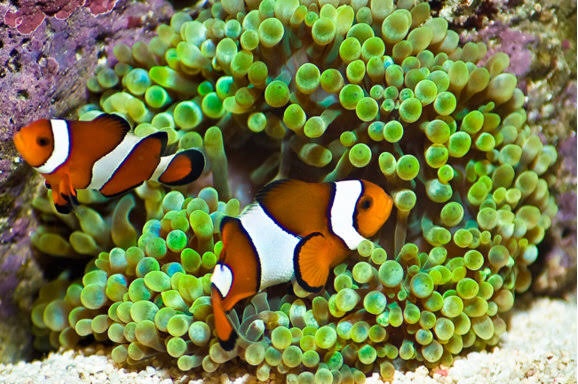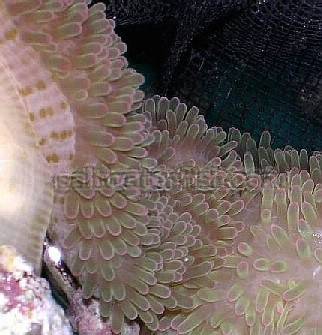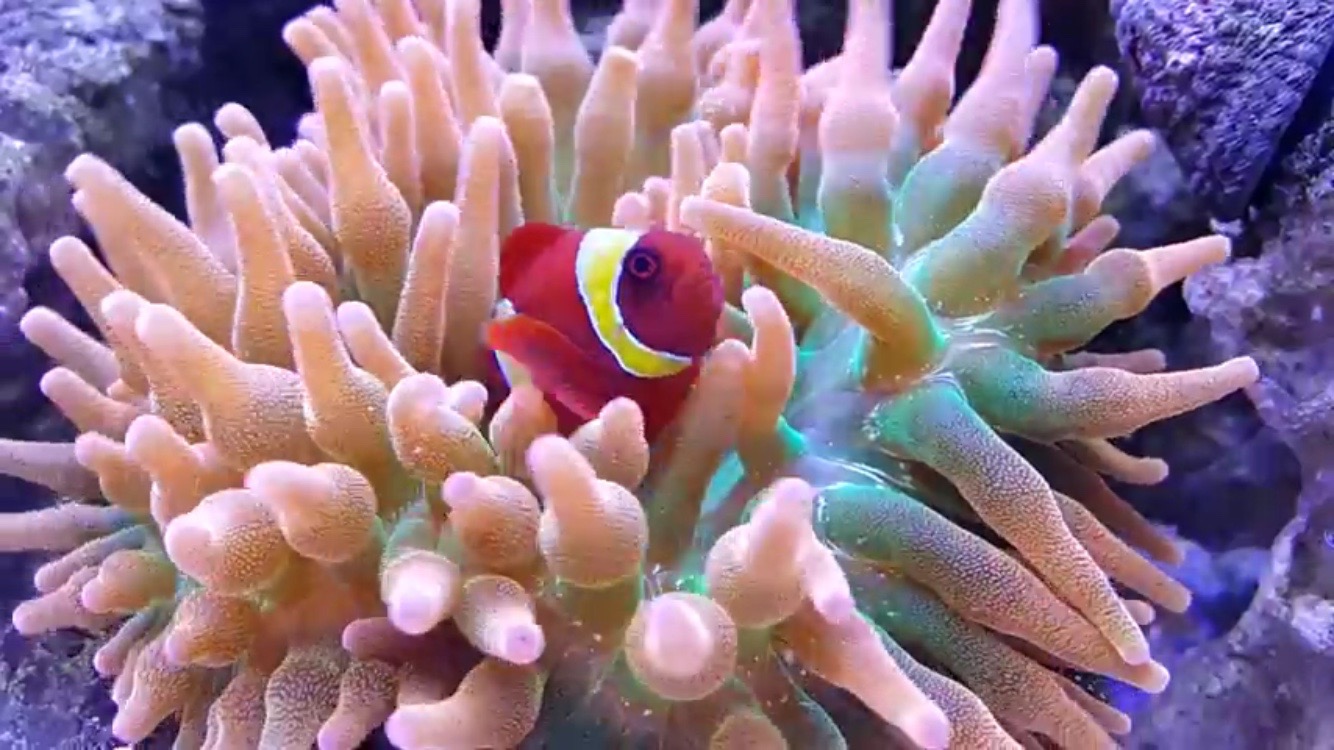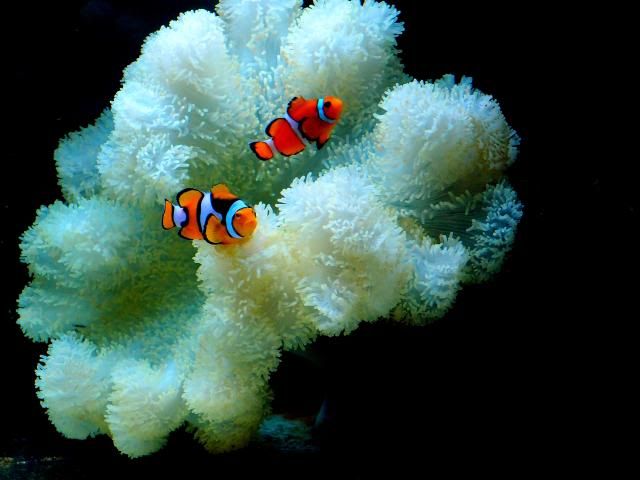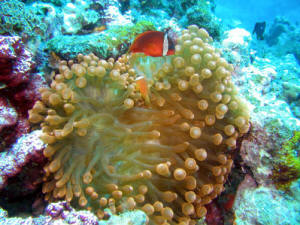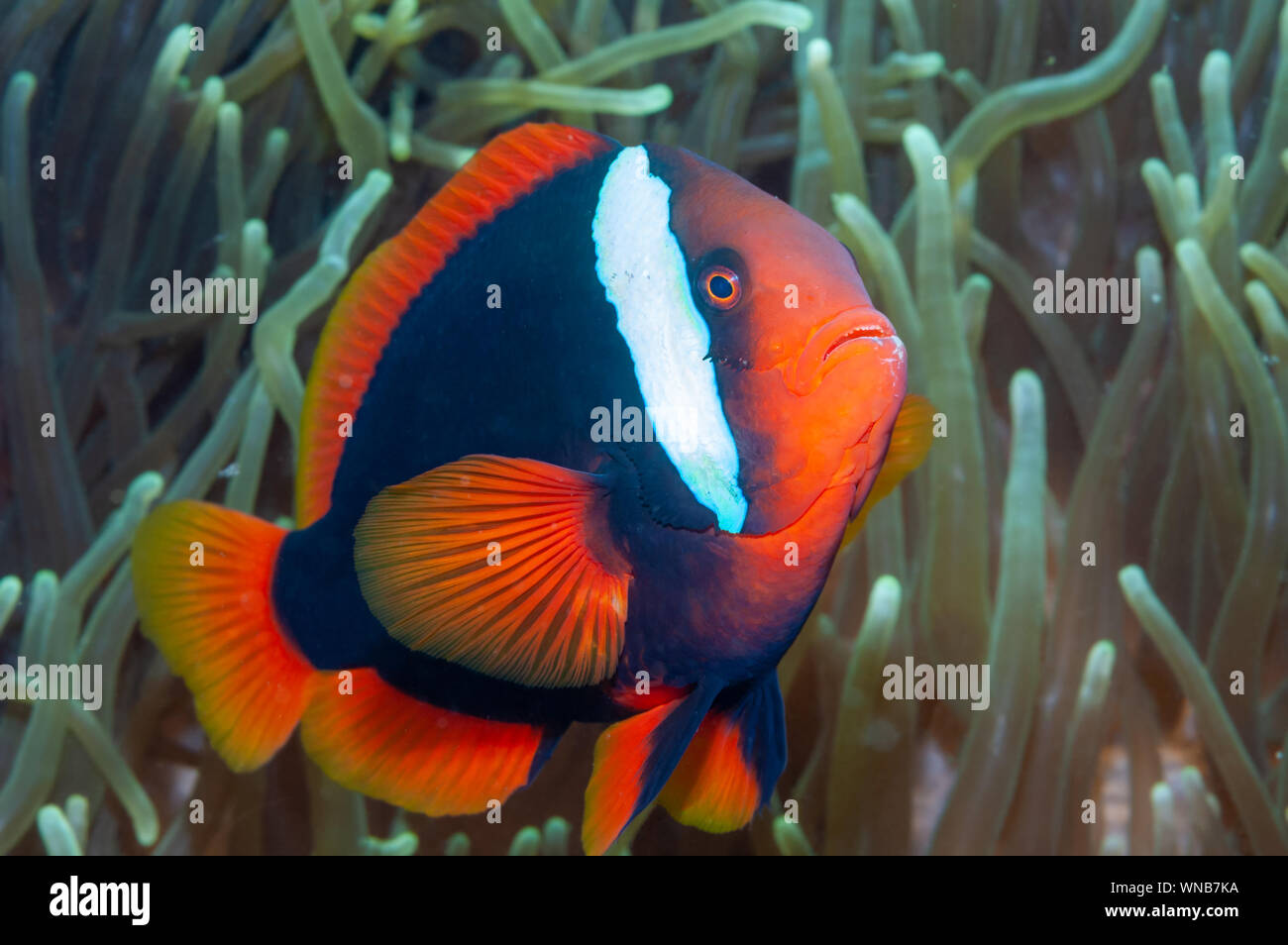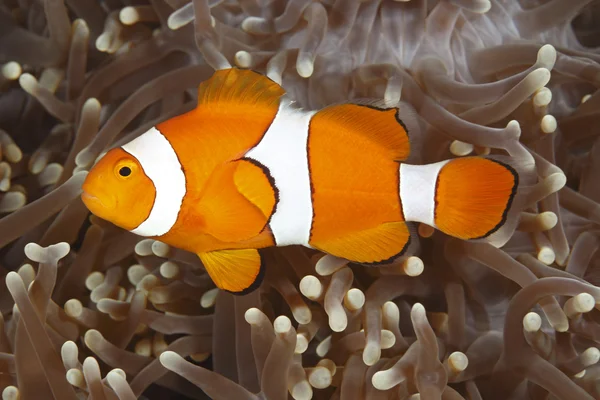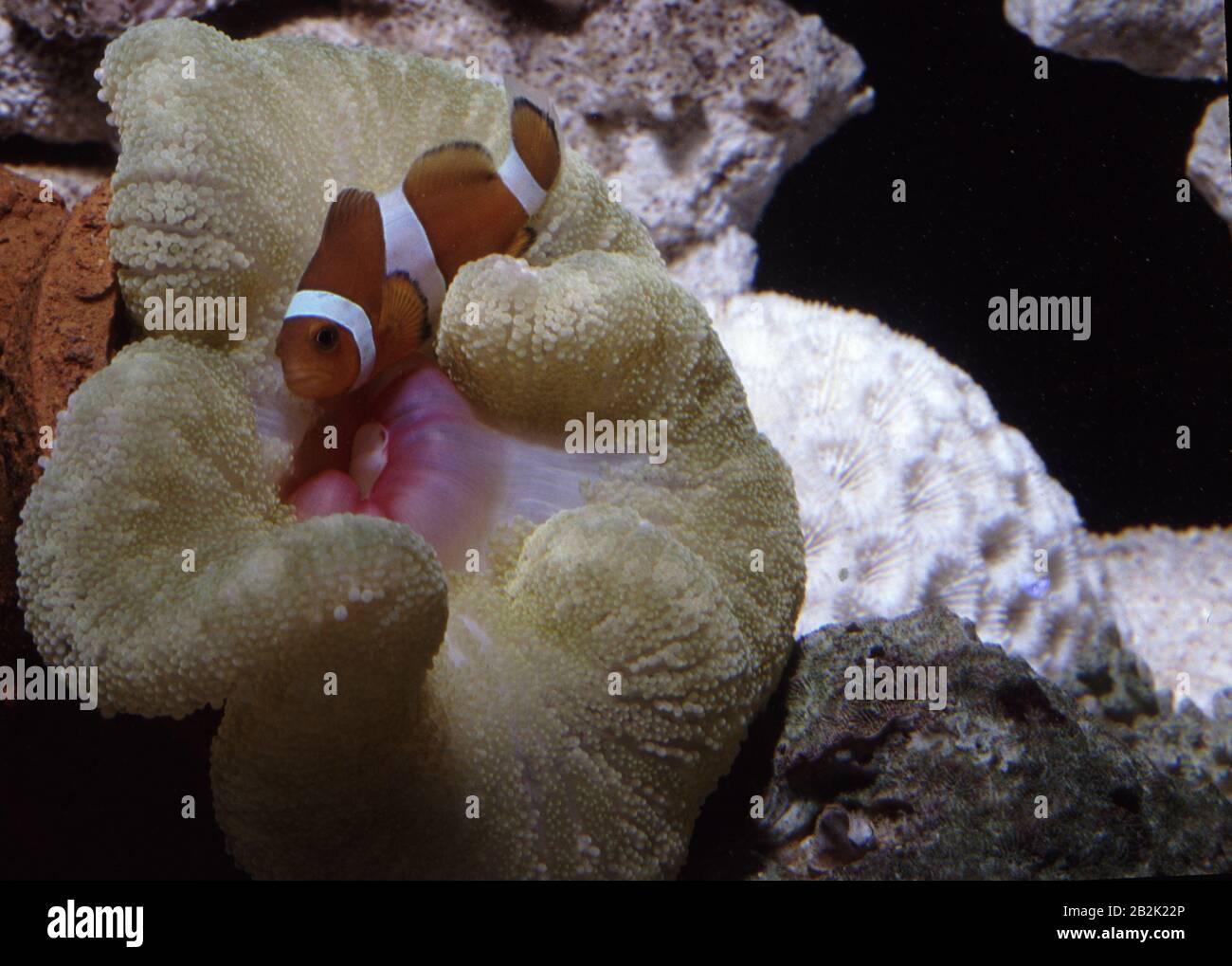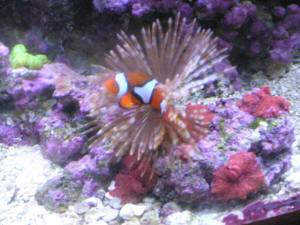The clownfish can protect the anemone from predation from certain anemone eating fish species racoon butterfly fish and the anemone can protect the clownfish from predation as well.
Tomato clownfish carpet anemone.
Some aquarists believe that tank raised clownfish do not host anemones as readily as wild caught clownfish after a few generations.
Male amphiprion frenatus tomato clownfish in a bubble tip anemone.
The tomato clownfish looks very similar to the cinnamon or black and red anemonefish.
In nature the diet of clownfish consists of crustaceans such as copepods and amphipods algae polychaete worms and leftovers from the anemone s meal.
The tomato clownfish amphiprion frenatus is a species of marine fish in the family pomacentridae the clownfishes and damselfishes.
Clarkii clownfish is an aggressive feeder.
Additionally the male tomato clownfish lacks the dark coloring that the female tomato clownfish has and that the red and black anemonefish has.
Other common names include blackback anemonefish bridled anemonefish fire clown and red tomato clown.
It is native to the waters of the western pacific from the japan to indonesia.
The difference is the size of the white bar.
The anemones true percula clownfish are normally associated with in the sea are the sebae heteractis crispa ritteri heteractis magnifica and giant carpet stichodactyla gigantea.
Clownfish have been known to host many things other than anemones including feather dusters and toadstool corals after rejecting every anemone presented to it.
Most clownfish are omnivorous feeders meaning that they will consume a variety of different food types.
Clownfish do not need an anemone to survive in the home aquarium.
Clownfishes may also provide food in a round about way for the anemone.
Anemones can be beneficial for the clownfish but the host anemones that are found in their natural environment can be difficult to care for in captivity and are not recommended for the saltwater novice.








